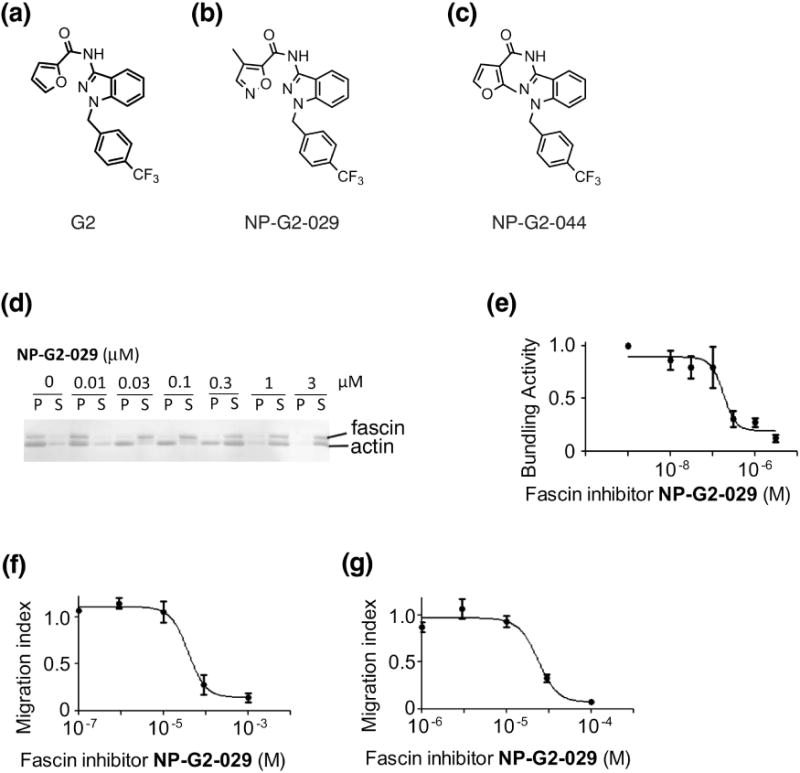Figure 1.

Fascin inhibitor NP-G2-029 decreases the actin-bundling activity of fascin and tumor cell migration. (a - c) The chemical structures of fascin inhibitors G2 (a), NP-G2-029 (b), and NP-G2-044 (c). (d and e) NP-G2-029 inhibits the actin-bundling activity of fascin. (d) One representative gel image of the actin-bundling assay (the low-speed sedimentation assay) is shown. Different concentrations of NP-G2-029 were added to the actin-bundling reactions. After low-speed centrifugation, the pellet (P) and supernatant (S) were separated and analyzed by SDS-PAGE. NP-G2-029 treatment shifts actin and fascin proteins from the pellet to the supernatant, indicating the inhibition of the actin-bundling function of fascin. (e) Quantification of the actin-bundling activity of fascin in the presence of different concentrations of NP-G2-029. The data are mean ± SEM. n = 3. (f and g) Boydem chamber assays show that NP-G2-029 decreases the migration of 4T1 mouse breast tumor cells (f) and MDA-MB-231 human breast tumor cells (g). Different concentrations of NP-G2-029 were added to the top of the chamber and the number of cells migrated through the membrane inserts was counted. Data are shown as mean ± SEM. n=3.
